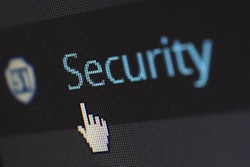
You can buy just about anything online these days, and a fake version of just about anything, too. In fact, you may have done so without even realizing it. From handbags to cleaning solutions, the online marketplace is filled with pirated goods, making it easy for them to find their way into your shopping cart. To make matters worse, Amazon and eBay haven’t been doing enough to remove fake goods from their sites. By failing to do their due diligence, the e-commerce giants have allowed these unacceptable business practices to lead to immense profits.
In hopes of changing this, President Donald Trump issued an anti-counterfeit memo in April to start cracking down on the sale of counterfeit goods online. While this is an obvious call for retailers to clean up their act, it is unclear how the administration plans to intervene. Within the next few months, the Departments of Homeland Security, Commerce and Justice will compile a report to determine how pervasive the problem is and if current processes are reducing the predominance of counterfeit products in the U.S. While it may take time to develop a plan of action, it won’t take long to identify the source of the problem.
The global outsourcing market amounted to $85.6 billion in 2018, and companies are increasingly outsourcing production in order to save money. Even though these companies are limiting expenses, outsourcing may do more harm than good. Brands typically share their product designs with subcontractors for the manufacturing of goods, which makes it extremely easy for these factories to duplicate these designs. At the same time, more factories employ second or third shifts that lack the same regard for QC or product integrity. These teams are manufacturing and shipping out thousands of inauthentic goods each day, unbeknownst to leadership.
Because the distinction between authentic and counterfeit items are practically impossible to detect, consumers are unknowingly purchasing low-quality goods, thinking it is the real deal.
Right now, U.S. Customs is responsible for identifying which shipments contain counterfeit products. But, with no detection tools in place, these officials are constantly playing a guessing game. A brand’s reputation rests in the hands of these ill-equipped individuals. Just one wrong decision can cost a company millions in potential sales and reputational damage.
The inability of Customs to detect these fakes has allowed the total amount of global counterfeiting to skyrocket. In fact, the counterfeit economy is projected to reach $1.82 trillion USD by the year 2020. This number will continue to grow as long as counterfeiters are profiting. Brand loyalty will suffer as an unfortunate result of customers’ misguided displeasure with fake goods. If technology and automation are simplifying the production of counterfeit goods, can’t this same degree of innovation put this practice to an end?
In fact, it can. Utilizing cutting-edge technology, brands can keep track of their goods throughout the supply chain and ensure product integrity.
For example, companies can apply Certified QR Codes or tracking devices powered by nanotechnology to a product’s packaging. These solutions can give brands more insight into where their assets are in real-time. They also allow customers to verify authenticity prior to purchasing.
Using a smartphone, the end user can scan an item’s code, which will direct their browser to a verified and secure web page. The certificate authority proves to consumers that the web page and product are authentic, and that their personal information is secure. This is the only process that will allow customers to be 100% certain that they are not purchasing a counterfeit product.
There’s no question that the escalation of counterfeit goods in the marketplace has generated a serious economic challenge. In order to protect themselves and consumers from harm, companies must begin to closely monitor their assets.
While it will take a colossal effort to eliminate counterfeit products, utilizing new technologies will allow brands to take a step in the right direction.



















